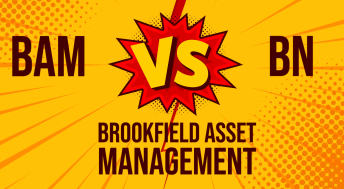There are always those few stocks out there that for one reason or another gain a cult-like following in the investment universe. You do not usually see this occur in your large, store away until retirement, blue-chip type of companies but more in your high flyer, small-cap securities. Student Transportation Inc. (NASDAQ:STB) seems to be one of these companies that can gather a lot of attention and some very heated comments/opinions from both sides of the coin. Most investors buy STB for a very attractive yield that is in the 7% to 8% range but we think the risks involved with the yield are not given proper consideration. Usually, the individuals buying these sorts of companies are in need of a source of income and are the ones who will be hurt the most if the distributions decline. We will look at a few areas that make Student Transportation Inc. an unattractive investment in our opinion.
An Unsustainable Payout:
To analyze the sustainability of the dividends, we will look at the free cash flow to equity on an annual basis from 2008 to 2013 in Figure 1.

We have included an asterisk alongside capital expenditures because that number also includes business acquisitions. Typically, one would not do this but looking at the history of STB, the Company has made some sort of business acquisition every year from as far back as 2004. 2013 has been the only exception so far. The consistency of these acquisitions would leave us to believe that they are not really 'one-off' opportunities, but rather a necessary part of the operations and required in order for the company to remain competitive. Much like upgrading or replacing old PPE.
Looking at the FCFE payout ratio, we see two main issues. First the volatility of the payout makes one question whether they should be paying a dividend at all. Typically, larger, stable companies with predictable cash flows pay a dividend. The other issue is that, while on certain years STB is able to comfortably pay the dividend, on a cumulative basis, Student Transportation is no where near making dividend payments in a sustainable manner. So where does the money come from?
Share Issues:
Student Transportation is not afraid to raise equity. They have increased the diluted shares outstanding from 43.3MM in 2009 to 94MM in 2013. Interestingly, each year the Company had a negative FCFE number, common shares seem to have been issued, making it seem as though they were raising shares (and diluting current shareholders ownership) in order to pay the dividend. While older shareholders' proportion of ownership has been declining, debt has been trending upward and EPS has been essentially flat since 2010, albeit much better than in 09/08. STB has raised nearly $179MM through equity offerings and this has been right around the appropriate amount to cover the $150MM in dividends. Figure 2 outlines these numbers below.
Most investors are likely to say: "So what? I still receive a juicy dividend every month and it rolls into my bank account." It is a fair comment and STB could very well continue to simply raise equity to cover the dividend indefinitely. The problems with counting on this, however, are that this strategy will only work as long as the company CAN continue to raise equity. In a bad market or times of distress, it could be much more difficult to go to a market and receive the required funding. Also, it is not the greatest way to manage capital. Instead of raising equity and diluting shareholders ownership in order to pay a high dividend, the Company could simply reduce the dividend to a more manageable/sustainable level, pay down debt (in turn reducing risk) and not dilute the ownership of past holders. This leads to the question that if the company needs to raise debt/equity in order to pay the dividend, should they be paying one at all? Maybe they are simply not at the right stage. Quite simply, paying a dividend when money needs to be raised in some form in order to pay it, sort of eliminates the whole purpose of dividends. Obviously, any cut at this point would be very hard on the stock as it is viewed as a high dividend name and this clientele effect has likely pushed STB into a corner.
We think the biggest test will be seeing what happens as interest rates rise. STB's stock price has benefited over the last 5 years as investors were likely reaching for yield. As the yield on lower risk investments increases, it will be interesting to see how the stock price reacts due to the dividend becoming less attractive on a relative basis. STB does also have a significant amount of debt and the ability to refinance at higher rates could be another area to watch. Overall, we would be reluctant to go short a name with such a high dividend and we very rarely (if ever) think shorting is a good strategy for most investors. We would simply just avoid a name like STB and put your hard-earned dollars elsewhere. The stock may (and has in the past) work out very well for investors but with the assumption that most investors are interested in the name for the distribution, why not just skip the risk and purchase a bond or some sort of blue-chip?
Additional disclosure: As always, please ensure you perform your own due diligence before making an investment decision. The above securities mentioned should not be construed as any sort of recommendation to buy or sell. Finally, in an effort to remain truly independent, those employed by 5i Research do not hold any Canadian stocks that are mentioned through the 5i website but employees are able to own U.S. securities. The writer does not own any of the securities mentioned at this time and does not plan to.





Comments
Login to post a comment.